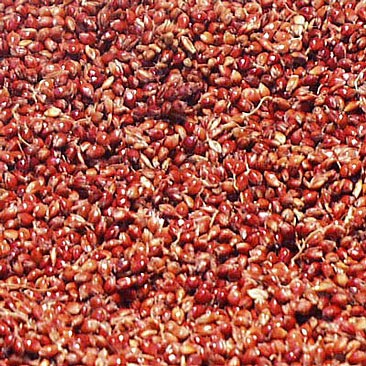Could sorghum be the feed ingredient that
helps optimise producers’ bottom-lines? In terms of global cereal grain
production, sorghum ranks fifth behind corn, rice, wheat and barley. It is a
hardy crop that can be grown in hot, dry climates around the world, especially
where corn or wheat cannot be grown. Because of this, it is a grain that is or
could be available globally to most producers. However, nutritionists have
discounted using sorghum as an alternative ingredient as it contains proteins
that are difficult to digest, causing reduced animal performance.
All hope isn’t lost though. A fairly simple
solution to this digestibility issue is the addition of the proper protease
enzymes to sorghum-based diets. These enzymes break down the complex protein
structures in sorghum, improving digestibility and amino acid availability of
the grain, and as a result making sorghum a more viable feed component.
Improving the digestibility of sorghum in animal diets with protease enzymes
offers producers another cost-effective alternative protein source.
To maximise the positive effects on
formulation cost, gut health and dietary anti-nutritional factors, it is
important to use a protease with a broad range of activity, which allows more
diversity in choosing protein sources. The best protease should work quickly to
rapidly hydrolyse indigestible proteins to minimise the flow of protein into
the hindgut. Non-coated products offer an advantage because it can take between
five and 30 minutes for coated products to dissolve in the intestine, which can
add up to nearly one-quarter of the total time the feed is in the animal’s
gastrointestinal tract.
CibenzA® DP100 is a potent protease enzyme
that combines all of these important characteristics; – broad-spectrum,
heat-stable and non-coated. Protease enzymes improve the digestibility of
sorghum over the typical industry averages by as much as 10 percent. That
translates into potential feed cost savings, as well as improved bacteria
balance and health.
The Global Miller
This blog is maintained by The Global Miller staff and is supported by the magazine GFMT
which is published by Perendale Publishers Limited.
For additional daily news from milling around the world: global-milling.com



No comments:
Post a Comment